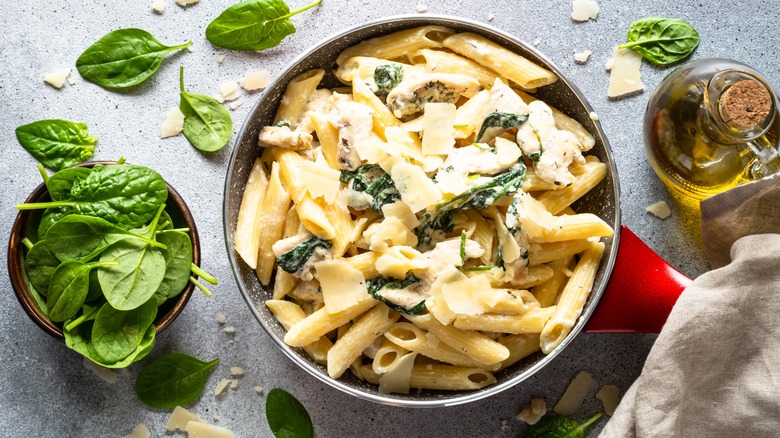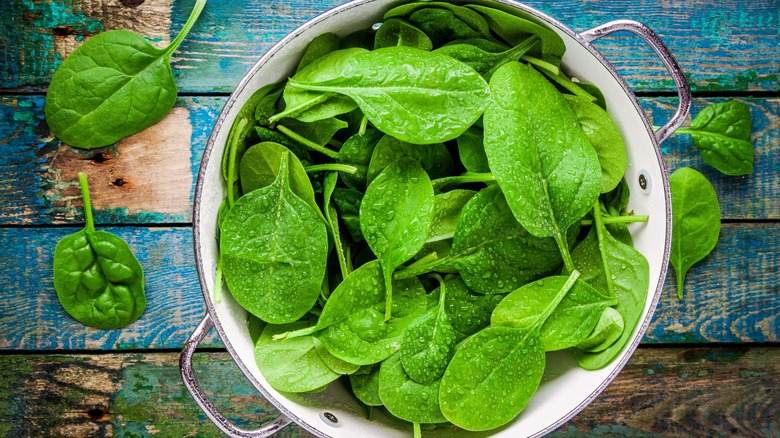The Effortless Hack To Incorporate Fresh Spinach Into Pasta Dishes
Pasta for dinner is as impressive as it is reliable. It's filling and easily elevated, yet simple to make and tough to catastrophically mess up. Still, the line between a "good" and an "unforgettable" plate of pasta is fine and elusive. It mostly comes down to technique — which is why we're sharing a hack that'll simplify pasta night even further.
Next time you're whipping up a pasta dish that includes spinach, like Chicken Florentine Casserole, draining a pot of pasta over fresh spinach wilts it instantly. To do it, simply fill a colander with fresh spinach, place it in the sink, and strain your cooked pasta directly into the colander. The hot water that you'll be straining anyway is the one-stop tool for wilting baby spinach leaves on contact. From there, all you'll need to do is give your colander a few good shakes, then transfer the pasta and veggies back to the pot and stir in your favorite sauce.
Not only does this simple move cut down on extra steps, but it also helps home cooks avoid overcooking spinach, which is tragically easy to do. Avoid those unpleasant clumps of soggy, largely inedible plant matter that look more gray than green. Plus, this technique doesn't dirty any extra dishes besides the colander, so you won't have a sink-full to wash after enjoying dinner.
Don't stop at spinach
Keep in mind that fresh spinach cooks down significantly. Wilted, one pound reduces to about one cup. In other words, it's probably a good idea to toss more spinach in the colander than you think you'll need. The type of fresh spinach you're working with also makes a difference. By nature, baby spinach comes in small, individual leaves that will wilt easily in hot water. If you're working with a mature bunch of spinach instead, chop it into bite-sized pieces before wilting it so it softens evenly.
This technique would also work with other tender leafy greens that can be similarly wilted, like kale, spinach, Swiss chard, arugula, collard greens, microgreens, watercress, and endive. But, use your best judgment to spot exceptions. Other tougher leafy greens might not wilt quite as thoroughly, like beet greens, cabbage, and bok choy. Stick to veggies with especially tender leaves here.
With this technique, it's never been easier to incorporate spinach into your pasta dishes and weave in some extra veggies into your diet without even having to think about it. Spinach grows loaded with potassium, vitamin K, and folate, but cooking it also brings out its iron and calcium. When you wilt raw spinach, it breaks down the oxalic acid that makes these vital nutrients tougher to digest, opening the door to a health food superhighway.

